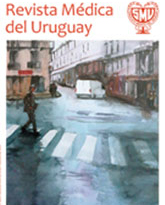Implementation and evaluation of a course on central venous access for hemodialysis with simulators
Keywords:
SIMULATION, TRAINING, MEDICAL EDUCATION, CENTRAL VENUS CATHERIZATION, RENAL DIALYSISAbstract
Introduction: the use of simulators for learning invasive maneuvers contributes to patients’ safety.
Objectives: to design and evaluate a course for learning how to introduce central venous catheters with Doppler ultrasound and the use of simulators.
Method: learning objectives, contents and didactics were defined. Initial and final skills were evaluated by means of an objective structured clinical evaluation (OSCE). The opinion of students and the level of self confidence achieved were evaluated. The impact on the clinical practice was determined by means of a record of the maneuvers of introduction of the central venous line in the following semester.
Results: the course was carried our in the first semester of 2015 for the seven Nephrology postgraduate students. It consisted of four modules (three hours) which comprised a theoretical introduction and practical activities, with the immediate feedback by professors. The satisfaction survey revealed the following: very satisfactory-excellent in 7/7 and the level of self-confidence increased in 4/7 participants. A significant improvement was noticed in the initial vs final OSCE (paired samples T-Test 0.05). A repairing instance was prepared. 64 central central venous lines were introduced by participants in the following course, and complications found included the following: two artery punctures, three hematomas localized, an artery aneurysm and a pneumothorax (10%), all of them evidenced a positive evolution.
Conclusions: the use of simulators in the learning of invasive maneuvers achieved a high level of satisfaction among participants, an increase in self-confidence and a significant improvement in technical aspects.
References
(2) Minha S, Shefet D, Sagi D, Berkenstadt H, Ziv A. See one, sim one, do one: a national pre-internship boot-camp to ensure a safer “student to doctor” transition. PLoS One 2016; 11(3):e0150122.
(3) McGee DC, Gould MK. Preventing complications of central venous catheterization. N Engl J Med 2003; 348(12): 1123-33.
(4) Kaye AD, Fox CJ, Hymel BJ, Gayle JA, Hawney HA, Bawcom BA, et al. The importance of training for ultrasound guidance in central vein catheterization. Middle East J Anaesthesiol 2011; 21(1):61-6.
(5) Greitz T. Memorial: Sven.Ivar Seldinger. AJNR Am J Neuroradiol 1999; 20(6):1180-1.
(6) Gayle JA, Kaye AD. Ultrasound guided central vein cannulation: current recommendations and guidelines. Anesthesiol News 2012 June. Disponible en: http://www.anesthesiologynews.com/download/centralline_an0612_wm.pdf. Consulta: 30 marzo 2016.
(7) English IC, Frew RM, Pigott JF, Zaki M. Percutaneous cannulation of the internal jugular vein. Thorax 1969; 24(4):496-7.
(8) Ullman JI, Stoelting RK. Internal jugular vein location with the ultrasound Doppler blood flow detector. Anesth Analg 1978; 57(1):118.
(9) Yonei A, Nonoue T, Sari A. Real-time ultrasonic guidance for percutaneous puncture of the internal jugular vein. Anesthesiology 1986; 64(6):830-1.
(10) Ortega R, Song M, Hansen CJ, Barash P. Videos in clinical medicine: ultrasound-guided internal jugular vein cannulation. N Engl J Med 2010; 362(16):e57.
(11) De Dombal FT, Horrocks JC, Staniland JR, Gill PW. Simulation of clinical diagnosis: a comparative study. Br Med J 1971; 2(5761):575-7.
(12) Vázquez Mata G, Guillamet Lloveras A. El entrenamiento basado en la simulación como innovación imprescindible en la formación médica. Educ Méd 2009; 12(3):149-55.
(13) Kirkpatrick DL, Kirkpatrick JD. The four levels: an overview. En: Kirkpatrick DL, Kirkpatrick JD. Evaluating training programs: 3 ed. San Francisco, CA: Berrett-Koehler, 2006:21.
(14) Fiore E, Leymonié J. Didáctica práctica para enseñanza básica, media y superior. 3 ed. Montevideo: Grupo Magro, 2014.
(15) Harden RM. Assess clinical competence-an overview. Med Teach 1979; 1(6):289-96.
(16) Palés Argullós JL, Gomar Sancho C. El uso de las simulaciones en educación médica. TESI 2010; 11(2):147-69.












